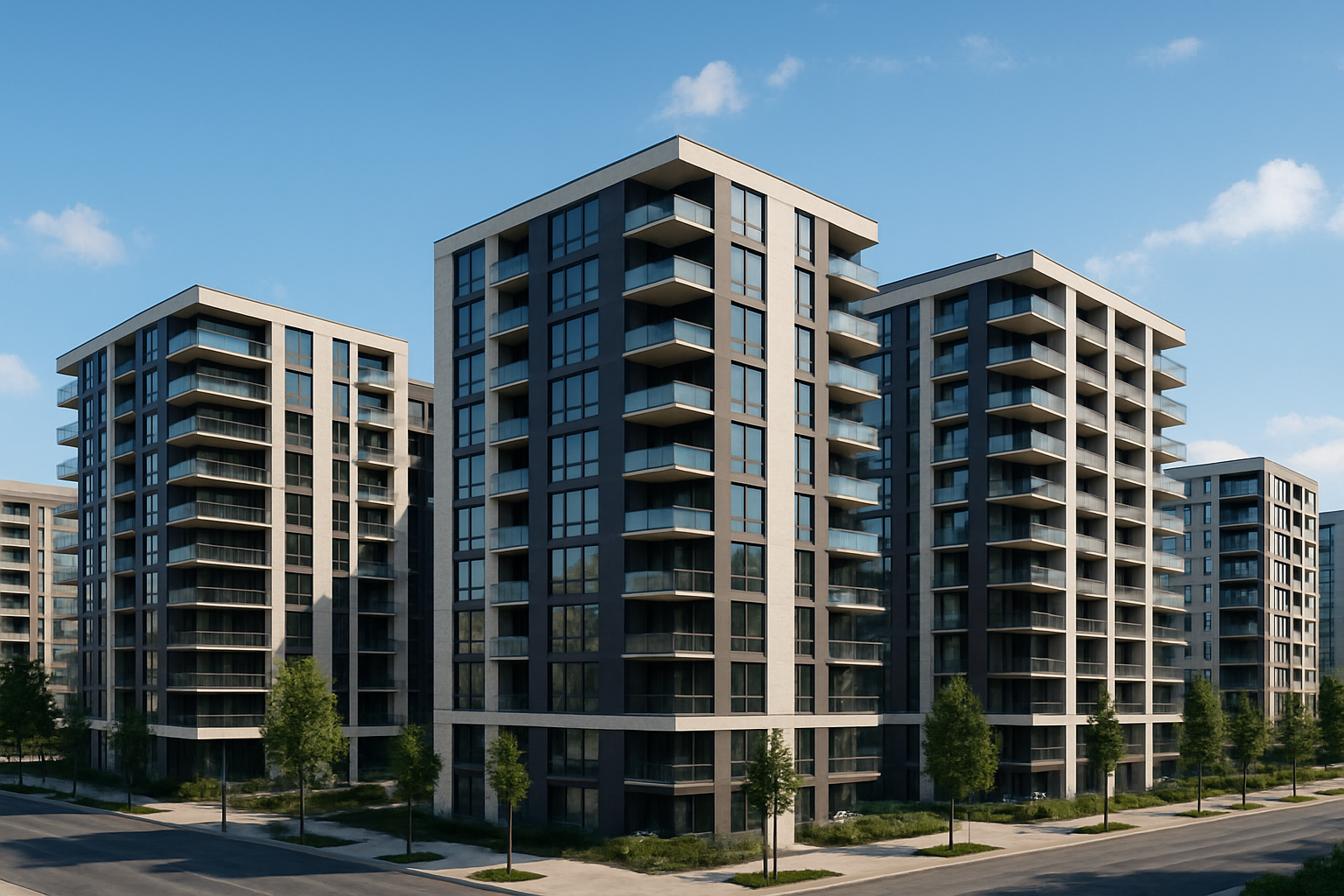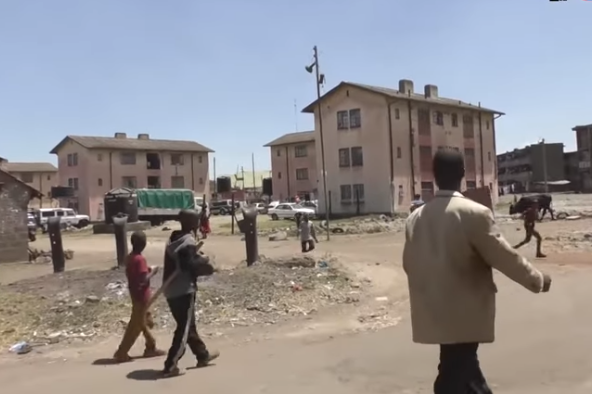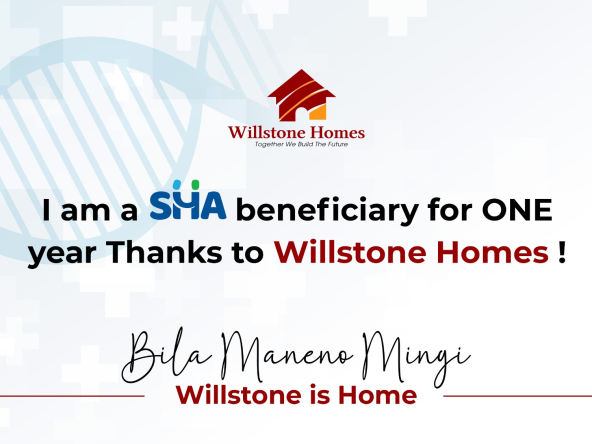Nairobi’s informal settlements, including Kibera, Mathare, and Mukuru, have long been characterized by overcrowding, poor infrastructure, and lack of basic amenities. However, the concept of vertical redevelopment in Nairobi slums is quickly becoming a game-changer in the effort to improve these living conditions. This strategy, which focuses on the development of multi-story buildings, offers the opportunity to accommodate growing populations while improving access to services like sanitation, electricity, and clean water. The recent handover of the Mukuru Slum Redevelopment project is a perfect example of how these vertical housing solutions are taking shape.
In this article, we will dive deep into the evolution of vertical slum redevelopment in Nairobi, exploring the UN-Habitat pilot programs, the role of participatory planning, and the challenges and opportunities presented by these innovative housing solutions.
Read Also: How US Tariffs Are Reshaping Kenya’s Real Estate Market
The Mukuru Slum Redevelopment Project: A Case Study in Vertical Housing
The Mukuru Special Planning Area (SPA) is one of the most ambitious and impactful slum upgrading projects in Nairobi. Recently, the government, in partnership with various non-governmental organizations (NGOs) and private developers, handed over the first batch of housing units under the Mukuru redevelopment initiative. This groundbreaking project is designed to replace the informal structures of Mukuru Slum with safe, affordable, and sustainable housing through vertical construction methods.
Key Features of the Mukuru Redevelopment Project:
- 13,000-15,000 Housing Units: A mix of low-income and affordable housing units are being developed to address the city’s growing housing deficit .
- Integrated Urban Infrastructure: This project also includes schools, markets, and health facilities, turning Mukuru into a sustainable community hub.
- Collaborative Community Involvement: Over 5,370 residents were actively involved in the planning phase, ensuring that the redevelopment aligns with the needs of the local community.
The vertical housing solution at Mukuru is not only an effort to improve living standards but also a model for other informal settlements in Nairobi. It is designed to optimize limited land while addressing the pressing need for more residential units in the city.
Read Also: How Real Estate Technology Solutions Are Transforming the Industry
Challenges and Opportunities in Vertical Redevelopment Projects
Challenges:
While the potential benefits of vertical redevelopment in Nairobi slums are significant, there are several challenges that developers and the government must overcome:
- Community Resistance: Many long-time residents fear displacement or losing their traditional way of life. Therefore, the participatory planning approach has been critical to ensuring that redevelopment plans are community-led and transparent.
- Affordability: Ensuring that the new units remain affordable for low-income residents is a critical issue. The involvement of UN-Habitat and other stakeholders has been key in maintaining affordability through subsidies and tax incentives.
- Infrastructure Overload: As new housing units are built, the surrounding infrastructure must also be upgraded to handle the increased population density, particularly in terms of water supply, sanitation, and transportation.
Opportunities:
Despite these challenges, there are significant opportunities for affordable housing in Nairobi through vertical redevelopment:
- Optimized Land Use: Vertical housing maximizes the use of limited space, making it possible to house more people within a smaller footprint.
- Improved Living Conditions: New high-rise buildings are being built with modern amenities, better sanitation, and sustainable infrastructure.
- Job Creation: The redevelopment of Mukuru and other Nairobi slums is generating jobs in construction, retail, and services, further boosting the local economy.
UN-Habitat’s Role in Nairobi’s Vertical Redevelopment
UN-Habitat has been instrumental in the success of these slum redevelopment projects. The organization has partnered with both the Kenyan government and private developers to create strategies that ensure the vertical redevelopment of Nairobi’s slums aligns with global sustainability goals. UN-Habitat’s focus has been on reducing displacement, improving living standards, and ensuring that the new developments are well-integrated into the broader urban planning landscape.
In its pilot programs, such as the Mukuru Special Planning Area, UN-Habitat has helped design affordable housing models that consider the unique challenges of informal settlements. These models emphasize:
- Sustainable Materials: Using eco-friendly building materials that minimize environmental impact.
- Affordable Mortgage Schemes: Working with financial institutions to offer low-interest mortgages, making homeownership a reality for residents.
- Community-Led Design: Empowering residents to actively participate in the design and planning process to ensure that the developments meet their needs.
Read Also: A Landmark Moment: Willstone Homes Delivers Yet Again with Title Issuance for Brookview Estates
What’s Next for Vertical Redevelopment in Nairobi Slums?
The success of the Mukuru redevelopment project has sparked interest in similar initiatives across Nairobi’s other informal settlements, including Kibera and Mathare. As Nairobi’s informal settlements continue to grow, vertical housing will be a critical component of addressing the city’s housing crisis.
Furthermore, the implementation of equity-share models and affordable housing Nairobi projects like those seen in Mukuru will continue to shape how urban slums are redeveloped. By focusing on community participation, these projects are ensuring that residents are not only beneficiaries but also active participants in reshaping their communities.
A Vision for Safer, More Sustainable Slums
The vertical redevelopment of Nairobi’s slums offers a promising solution to the city’s chronic housing shortage. With projects like the Mukuru redevelopment already underway, vertical housing solutions are helping to transform informal settlements into modern, self-sustaining urban areas. Although challenges remain, such as affordability and infrastructure overload, the Mukuru Special Planning Area has proven that participatory planning and UN-Habitat’s involvement are essential in ensuring that these projects meet the needs of Nairobi’s most vulnerable residents. The recent handover of new units in Mukuru marks a critical milestone in the journey toward safer, more affordable housing for Nairobi’s growing urban population.
Read Also: The Rise of Blockchain in Real Estate: Transforming an Age-Old Industry




